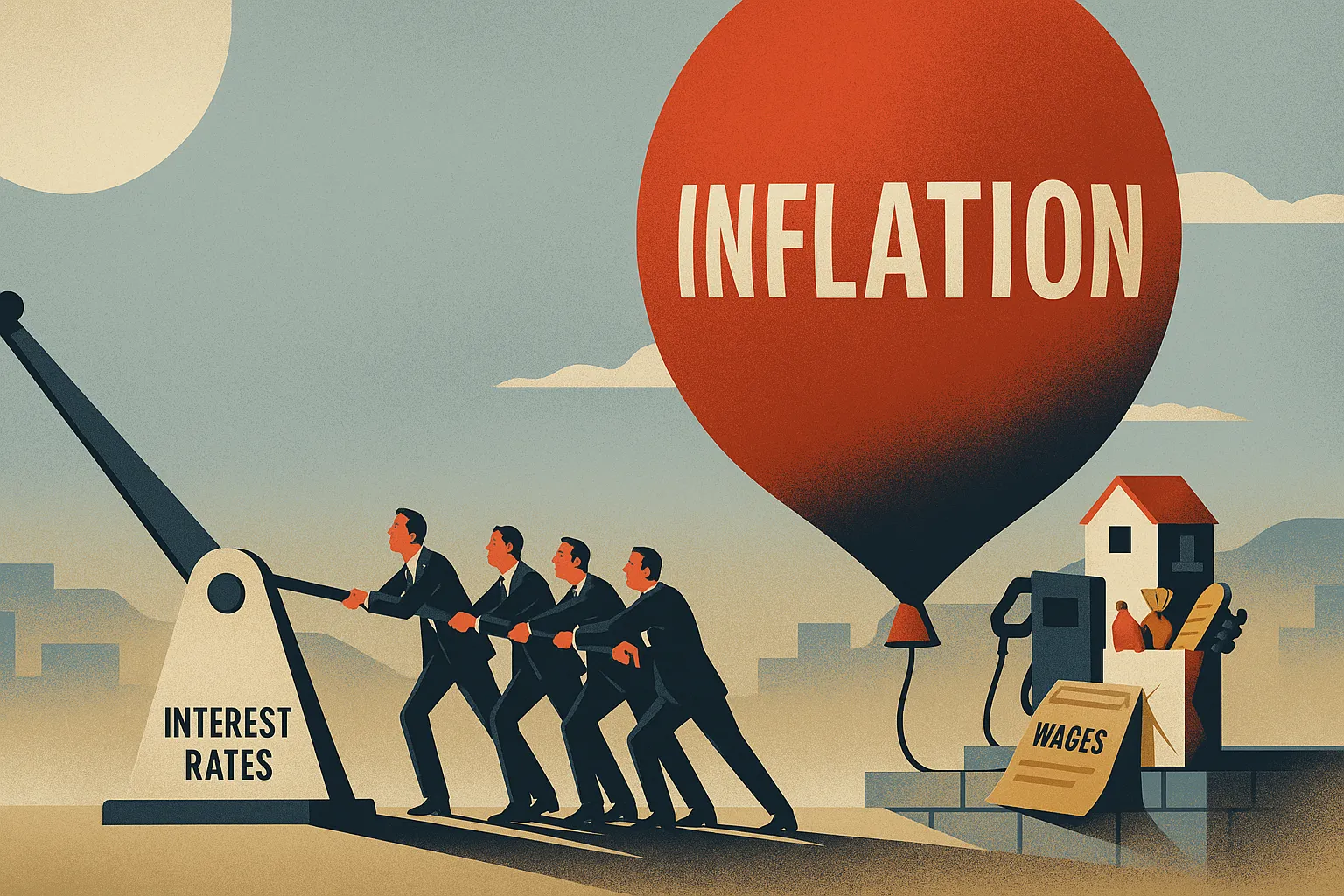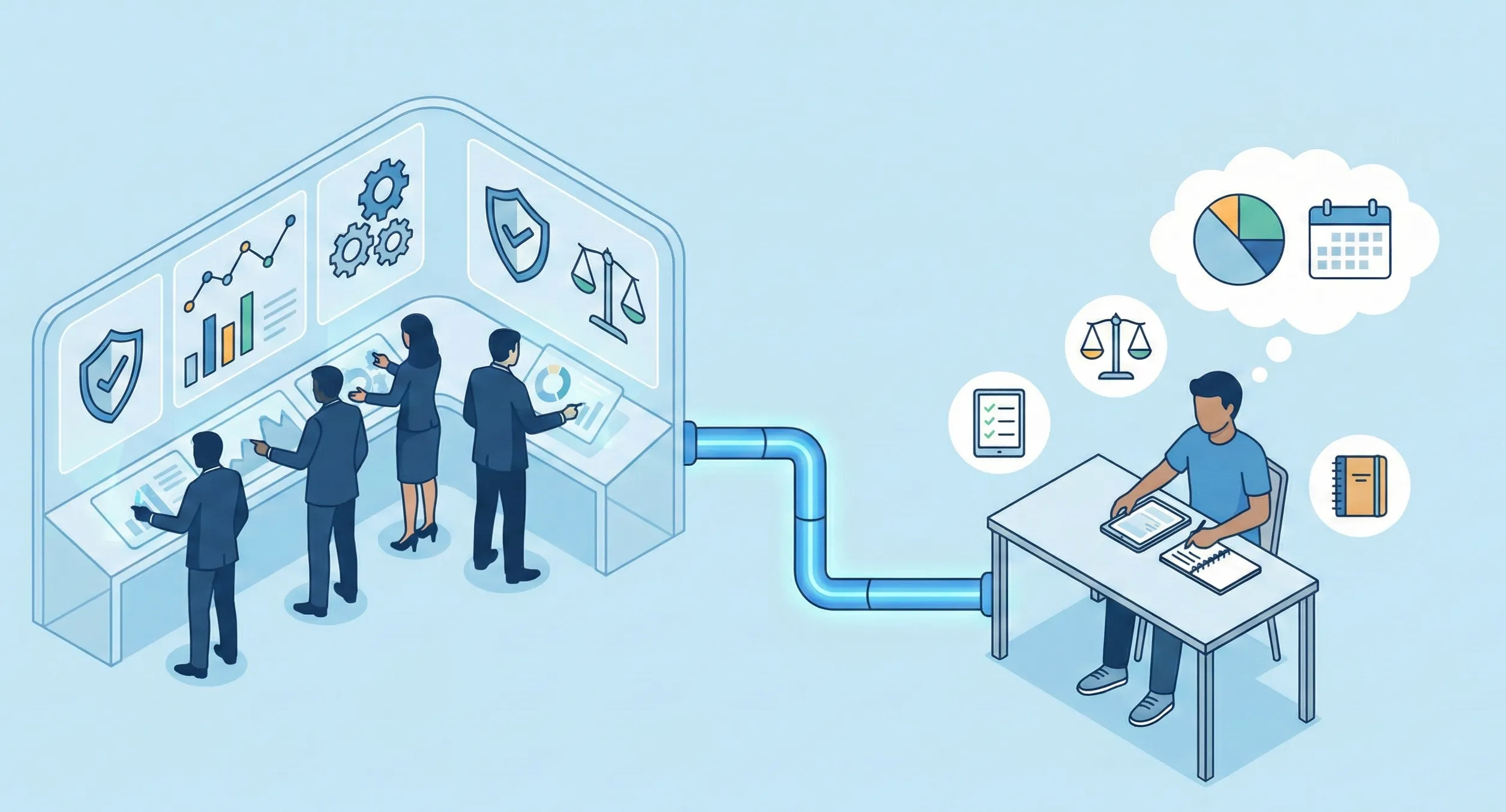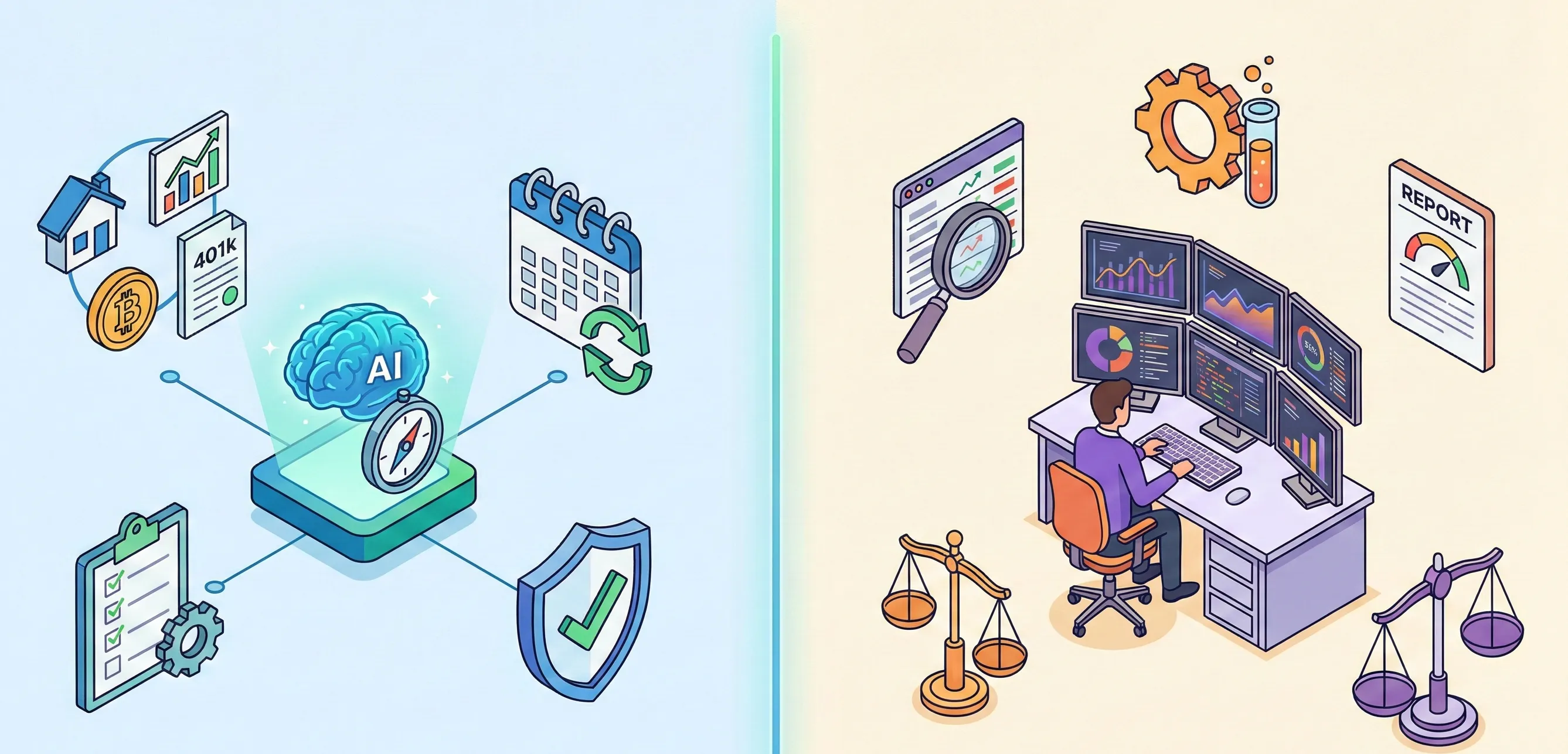Can Rate Hikes Really Stop Inflation?

According to the Bureau of Labor Statistics, U.S. inflation peaked at 9.1% in June 2022—the highest in four decades (BLS, 2022). The Federal Reserve responded with the most aggressive rate-hiking campaign since the 1980s. But for many investors, a key question lingers: Do higher interest rates actually stop inflation?
The theory is simple: raising rates should cool demand by making borrowing more expensive. Yet the real-world impact isn’t always so clear. This article explores when interest rate hikes work, when they don’t, and why global shocks and timing matter more than most headlines suggest.
Key Takeaways
- Interest rate hikes can reduce inflation—but only when inflation is driven by demand, not supply shocks.
- Timing matters: monetary policy works with a lag, sometimes 11 to 12 months.
- Supply-driven inflation—like energy or food price shocks—often requires more than just rate policy.
- Rate hikes can also create financial stress, which can suppress inflation indirectly—but at a cost.
Why Central Banks Rely on Rate Hikes
Interest rate hikes are a central bank’s primary tool to cool inflation. When the Federal Reserve raises the federal funds rate, borrowing costs rise across mortgages, credit cards, and business loans. In theory, this discourages spending and investment, slowing down demand-driven price increases.
However, the process isn’t instantaneous. A San Francisco Fed analysis finds that demand-driven core PCE inflation typically falls within 11 to 12 months of a monetary policy tightening—highlighting roughly a one-year transmission lag. This delay can make it hard for investors and policymakers to judge whether current hikes are "working."
So what happens when inflation isn’t caused by excess demand—but by supply shortages?
Why It Doesn’t Always Work
Cleveland Fed and Fed research show the late 2021–2022 inflation surge reflected tight labor markets, energy supply disruptions, and broader capacity constraints—rather than pure consumer demand growth. That makes traditional rate hikes less effective.
Consider this: higher rates don’t create more oil, unclog ports, or reduce geopolitical risk. In these cases, rate hikes may still dampen inflation, but often by a different and more painful channel: slowing the broader economy.
That’s what many economists believe happened in the late 1970s. Federal Reserve History shows the Fed pushed the federal funds rate above 19% by late 1981—sparking back-to-back recessions in 1980 and 1981–82 and sending unemployment past 10% before inflation finally declined.
This underscores a hard truth: when inflation is supply-driven, monetary policy can only do so much.
Hypothetical: The Lag Effect
Imagine a 38-year-old tech worker living in Austin. In 2022, she watched inflation climb and mortgage rates double in under a year. She held off buying a house and delayed home renovations. So did thousands of others.
The demand slowdown was real—but the inflation numbers didn’t fall right away. It took until mid-2023 for core inflation to moderate meaningfully. By then, the Fed had already raised rates several times. This scenario reflects a broader reality: many investors overestimate how quickly policy changes show up in CPI data. Patience and context matter.
This lag isn’t just theoretical—it’s visible in the data.
The chart below shows how inflation (CPI) began accelerating well before the Fed acted, and how it took more than a year after rate hikes began for inflation to start falling. This delay is a hallmark of monetary policy—and a key reason why raising rates doesn't deliver instant results.
![[Source: Morningstar, using Federal Reserve Economic Data and BLS (as of Feb. 2022). The orange line shows CPI year-over-year growth, the pink line shows the Federal Funds Rate, and the blue line represents the 10-Year Treasury Yield. The lag between policy and inflation reaction is clearly visible from 2021 to 2023.]](https://cdn.prod.website-files.com/6486a80c48d5ac597d110aff/6893351af83f6637b9213f66_AD_4nXf9obcmt7zlI_l5qRUxQPS4YBcAMIMHw530-6Yl9is4BJZ7wZPKJKTPvnrYJN0jpzWjtSg9gvT7PtTN5GPKAMlEHkjJ2BpcoSvpPioCMp36VcNbFAgt_-jZDa-U1KbeSK75J89fxg.png)
What Else Drives Inflation?
Interest rates are just one part of the inflation puzzle. Other major drivers include:
- Global commodity prices
- Geopolitical disruptions
- Labor market shifts
- Fiscal policy and government stimulus
Fed analysis indicates COVID-era fiscal support—including direct stimulus checks—significantly boosted consumption while production lagged, intensifying excess-demand and price pressures. That’s one reason why inflation spiked faster than interest rate policy could catch up.
According to the BLS, from December 2023 to December 2024, the CPI rose 2.9%, with food prices up 2.5%—underscoring persistent price pressures despite aggressive rate hikes. In these cases, structural reform, trade dynamics, and fiscal decisions matter as much as monetary ones.
When Rates Work Best—and When They Don’t
In general, rate hikes tend to work best when:
- Inflation is demand-driven
- The economy is growing above trend
- Consumer credit is expanding rapidly
- Business investment is overheating
They tend to work poorly when:
- Inflation is driven by supply shocks (like oil or semiconductors)
- The economy is already slowing
- Rate hikes trigger financial instability
How Rate Hikes Impact Consumers
While interest rate hikes are designed to cool inflation at a macro level, their real impact is often felt most directly by households, borrowers, and everyday investors.
- Reduced Borrowing and Spending: Higher rates mean higher monthly payments on mortgages, car loans, credit cards, and business debt. That discourages large purchases and new borrowing, which slows down consumer demand and business expansion.
- Encouraged Savings: On the flip side, savings accounts, CDs, and Treasuries start offering better returns. This incentivizes more saving, especially among retirees and risk-averse investors.
- Slower Economic Growth: When spending and borrowing drop, economic activity cools. Hiring slows, business investment contracts, and GDP growth can falter. That’s the tradeoff central banks knowingly make to bring down inflation.
- Pressure on the Stock Market: Higher interest rates tend to reduce company profits (via higher borrowing costs) and make future earnings less valuable in today’s terms. The result: downward pressure on stock prices, particularly in growth sectors.
- Risk of Recession: If rate hikes are aggressive or mistimed, the economic slowdown can turn into a recession. Several past cycles—including the early 1980s and 2008—were marked by rate-driven downturns.
So what should investors take away?
Rate Hikes Are a Blunt Tool—Not a Magic Wand
Raising interest rates is often necessary—but not always sufficient. It works better as part of a broader policy mix than as a standalone solution. Investors who expect instant results may be disappointed.
A useful way to think about it: rate hikes reduce demand, but they don’t fix supply. And when inflation stems from supply problems, a recession—not a policy adjustment—often does the heavy lifting.
How optimized is your portfolio?
PortfolioPilot is used by over 40,000 individuals in the US & Canada to analyze their portfolios of over $30 billion1. Discover your portfolio score now:






